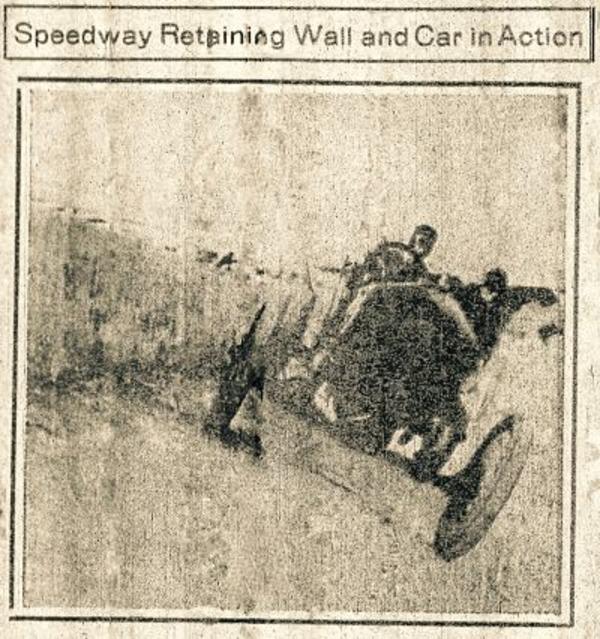- 1890s Cars
- Barney Oldfield Images
- Oldfield - Petersen
- Beer
- Early Auto Industry
- Uniontown - Marci McGuinness
- General Period Clip Art
- Early Race Related Clip Art
- Advertising and Editorial Cartoons
- Early Indianapolis
- IMS Construction
- Indianapolis Speedway
- First IMS Auto Races
- Failed 1909 Air Show
- 1909 IMS Balloon Races
- 1909 IMS Motorcycle Meet
- 1910 Indianapolis Auto Show
- 1913 Indianapolis 500
- 1919 Indianapolis 500
- Joe Dawson
- WWI "500" Winner Draft Cards
- Frank Di Buglione (off the wall art, LLC)
- Gilbert Art
- Carl Graham Fisher
- IMS Hall of Fame Museum
- Alco at 100th Anniversary
- Frederic Matile - Morris Park
- Miami-Fulford Speedway
- Paul Sheedy Collection
- Early Wyoming Racing - 1909 - 1919
- Personalities
- Early Racing Images
- Glidden Tour
- 1909 Cobe Trophy
- Fairmount Park & Belmont Estates
- Early Santa Monica
- Don Radbruch Collection
- Jeroen de Boer Collection 1910
- Jeroen de Boer Collection 1912
- Jeroen de Boer Collection 1913
- Jeroen de Boer Collection 1914
- Georges Boillot
- Story's Indianapolis 500 Cars
- Story's Sports Cars
- Story's Grand Prix Cars
- Old School
- Story's Brickyard Sketchbook
Aitken & Brickyard Retaining Wall - 1909
Photo Gallery Categories
Search
Featured Article
Image of The Week

This image artifact is derived from microfilm records of a powerful Indianapolis News photograph published as the Christmas Season drew nearer on December 2, 1909. It served to illustrate another safety breakthrough at the Indianapolis Motor Speedway. Note that the heading refers to the wall you can make out beside the National Motor Vehicle Company racer of driver Johnny Aitken. This is one of the earliest references to a "retaining wall."
The copy associated with the photo appears below. Before you go there, though, make note that a very young mechanic by the name of Howdy Wilcox was riding with Aitken. He was destined to win the 1919 Indianapolis 500. Also, note that at the end of copy quoted below the planned date for the time trial was December 11 or 12. The event finally took place on December 17 and 18.
"Driver John Aitken and mechanician H.S. Wilcox in fast trial in National. 'I guess this will hold you fellows back,' said Carl G. Fisher, president of the Indianapolis Motor Speedway Company yesterday afternoon, as he addressed John Aitken, dean of the local colony of racing car drivers. Aitken surveyed the big three-foot cement retaining wall just completed around the south turn at the speedway and in reply he also guessed that it would. The retaining wall, which is no being finished, is intended as a safeguard for spectators and represents a vast outlay of money. It is solid cement, three feet high and one foot thick, and extends from the gate near the south wing of the main grand stand to a point beyond the bleacher stands on the south side of the course. The wall is expected to make it impossible for a car to leave the course on the outer side and spectators in this section, it is said, may view the races with the utmost assurance of safety. Aitken, with his mechanician H.S. Wilcox, went to the speedway in his National car, the same he drove in the Vanderbilt Cup race and at Atlanta for the purpose of testing the brick surface. Owing to the number of men and teams engaged in finishing up the brick laying, however, it was impossible to make anything like a fair trial. He did not let his car out to any extent but is confident that when the course is finished he will be able to do one hundred miles an hour on the straightaways and maintain an average speed of ninety miles an hour in a race. The best average speed in a race at Atlanta was seventy-two miles per hour. Four hundred men were at work on the track yesterday, according to Mr. Fisher, and it was expected that the remaining gap would be filled in with brick by tomorrow night. The track will be allowed to stand for two days and will then be thrown open to Indianapolis drivers and motor enthusiasts for inspection. This, however, will be only for one day. The track will then be turned over to the drivers that will take part in the speed trials set for December 11 or 12."
| Attachment | Size |
|---|---|
| Aitken-Wilcox-wall_opt (1).jpg | 65.99 KB |
